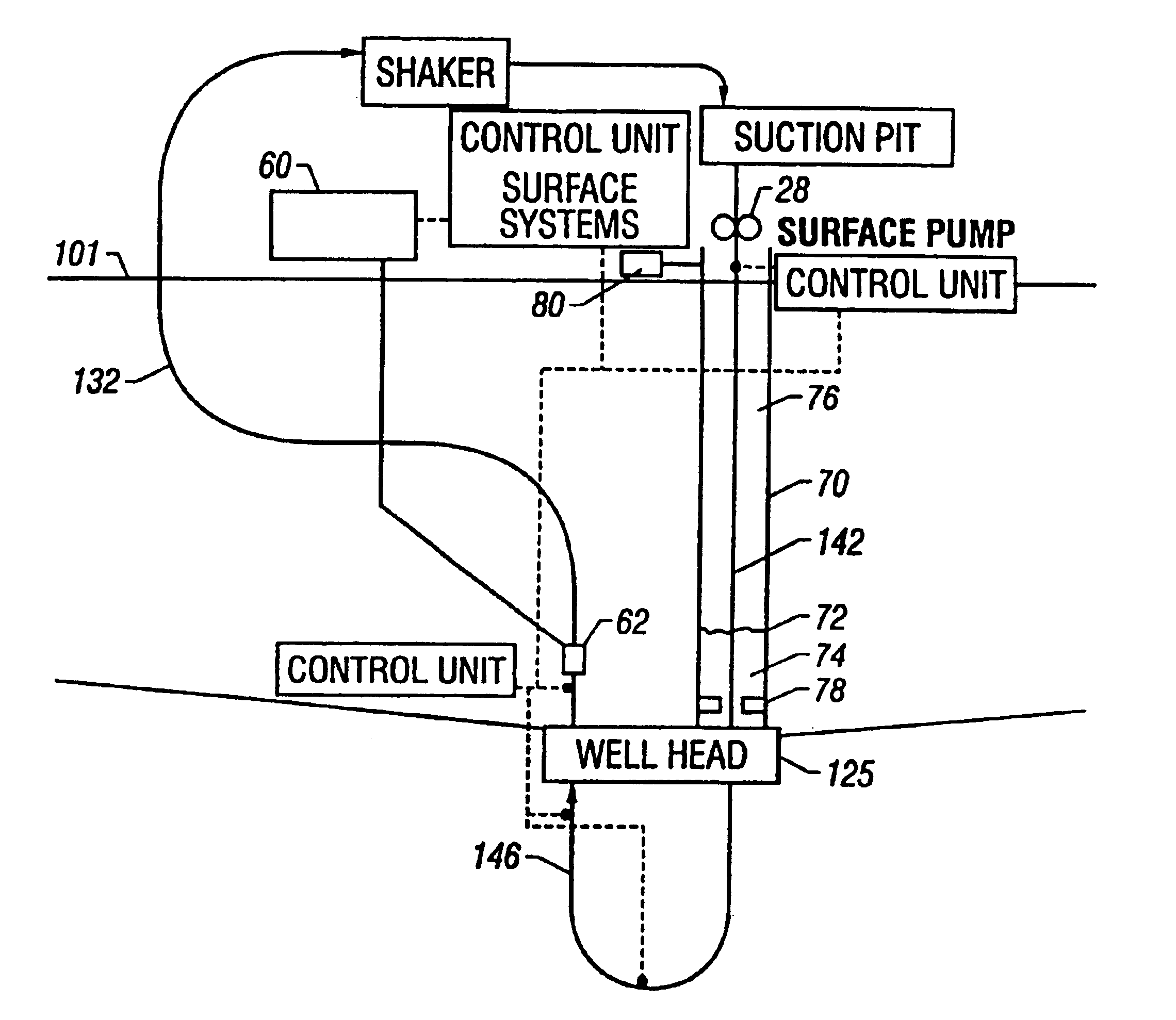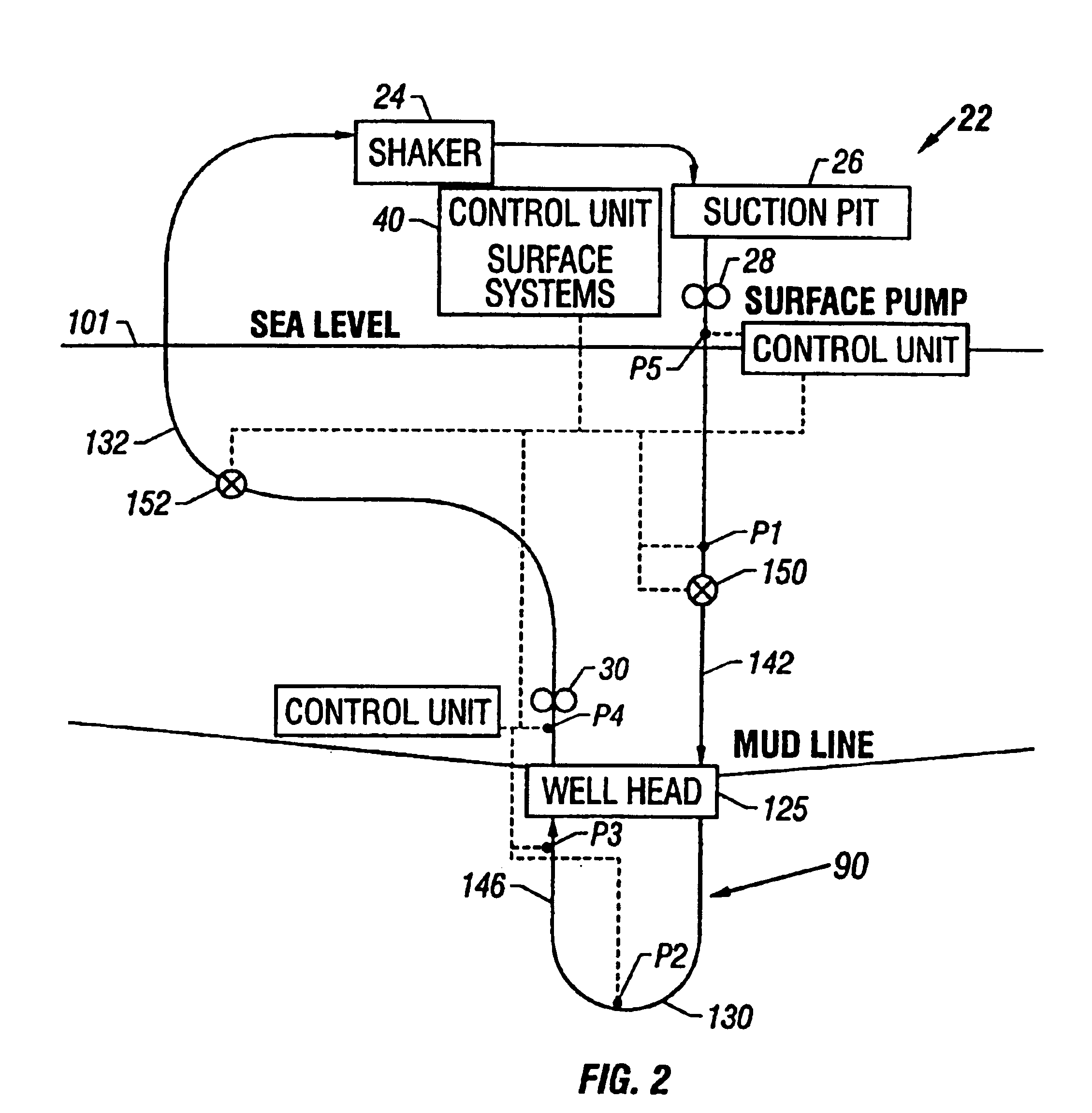Subsea wellbore drilling system for reducing bottom hole pressure
a wellbore and bottom hole technology, applied in the direction of wellbore/well accessories, sealing/packing, vessel construction, etc., can solve the problems of increasing the concentration of solids, not being used in practical application, and increasing the ecd of return fluid even greater than the static mud weight, so as to achieve faster and more effective subsea downhole operations, the effect of rapid deploymen
- Summary
- Abstract
- Description
- Claims
- Application Information
AI Technical Summary
Benefits of technology
Problems solved by technology
Method used
Image
Examples
Embodiment Construction
FIG. 1 shows a schematic elevational view of a drilling system 100 for drilling subsea or under water wellbores 90. The drilling system 100 includes a drilling platform, which may be a drill ship 101 or another suitable surface work station such as a floating platform or a semi-submersible. Various types of work stations are used in the industry for drilling or performing other wellbore operations in subsea wells. A drilling ship or a floating rig is usually preferred for drilling deep water wellbores, such as wellbores drilled under several thousand feet of water. To drill a wellbore 90 under water, wellhead equipment 125 is deployed above the wellbore 90 at the sea bed or bottom 121. The wellhead equipment 125 includes a blow-out-preventer stack 126. A lubricator (not shown) with its associated flow control valves may be provided over the blow-out-preventer 126. The flow control valves associated with the lubricator control the discharge of the returning drilling fluid from the lu...
PUM
 Login to View More
Login to View More Abstract
Description
Claims
Application Information
 Login to View More
Login to View More - R&D
- Intellectual Property
- Life Sciences
- Materials
- Tech Scout
- Unparalleled Data Quality
- Higher Quality Content
- 60% Fewer Hallucinations
Browse by: Latest US Patents, China's latest patents, Technical Efficacy Thesaurus, Application Domain, Technology Topic, Popular Technical Reports.
© 2025 PatSnap. All rights reserved.Legal|Privacy policy|Modern Slavery Act Transparency Statement|Sitemap|About US| Contact US: help@patsnap.com



